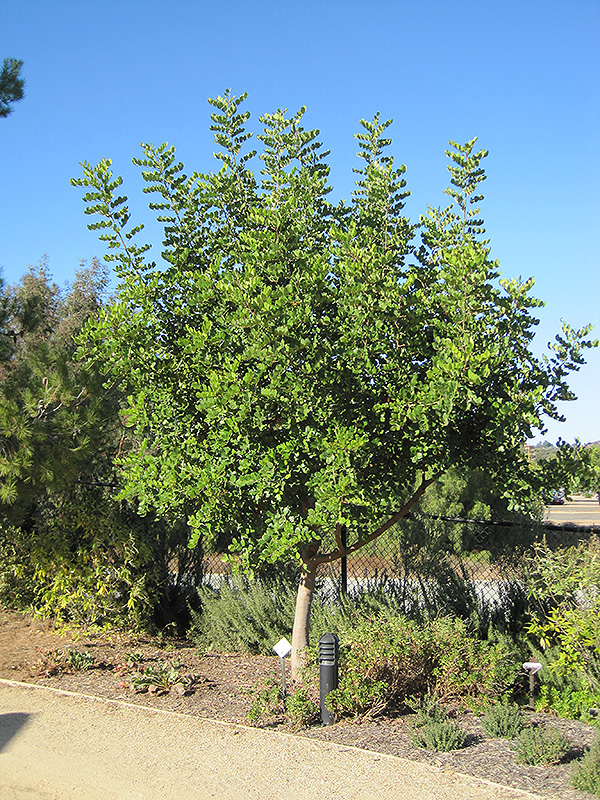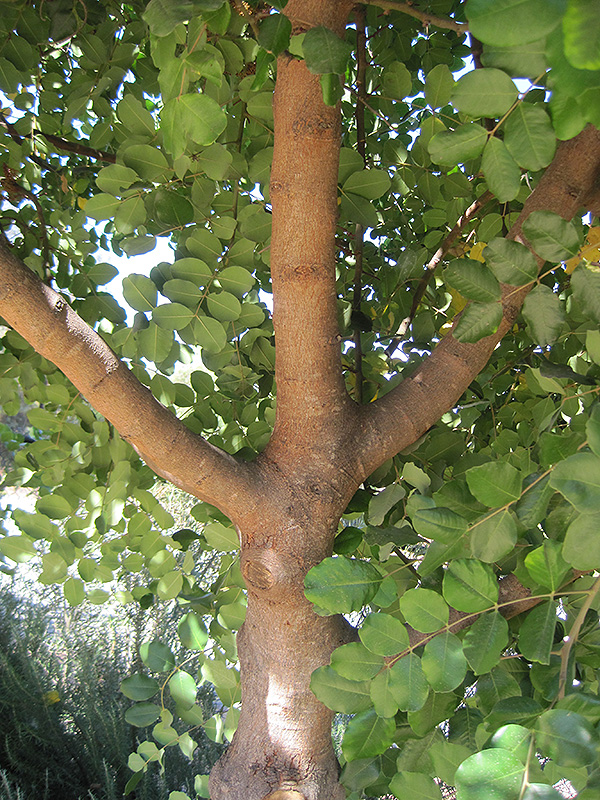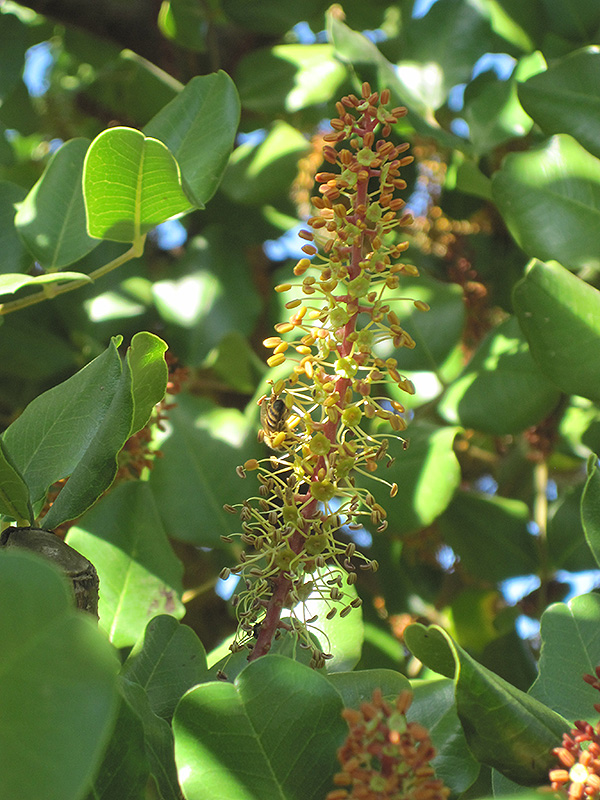Height: 50 feet
Spread: 50 feet
Sunlight:
![]()
Hardiness Zone: 8b
Other Names: St. John's Bread, Locust Bean
Description:
Although widely cultivated for its seed pods, this tree is quite ornamental when planted in a landscape; a dense canopy of rounded, glossy foliage makes it a great shade tree; red, catkin-like flowers in late spring; male trees do not flower or fruit
Ornamental Features
Carob Tree has attractive dark green evergreen foliage on a tree with an upright spreading habit of growth. The glossy round pinnately compound leaves are highly ornamental and remain dark green throughout the winter. It is draped in stunning racemes of red catkins with orange overtones along the branches from late summer to mid fall. The fruits are showy brown pods displayed in late fall. The fruit can be messy if allowed to drop on the lawn or walkways, and may require occasional clean-up.
Landscape Attributes
Carob Tree is a dense evergreen tree with an upright spreading habit of growth. Its average texture blends into the landscape, but can be balanced by one or two finer or coarser trees or shrubs for an effective composition.
This tree will require occasional maintenance and upkeep, and can be pruned at anytime. It is a good choice for attracting bees and butterflies to your yard. It has no significant negative characteristics.
Carob Tree is recommended for the following landscape applications;
- Accent
- Shade
Planting & Growing
Carob Tree will grow to be about 50 feet tall at maturity, with a spread of 50 feet. It has a low canopy with a typical clearance of 4 feet from the ground, and should not be planted underneath power lines. It grows at a slow rate, and under ideal conditions can be expected to live for 80 years or more. This is a dioecious species, meaning that individual plants are either male or female. Only the females will produce fruit, and a male variety of the same species is required nearby as a pollinator.
This tree should only be grown in full sunlight. It is very adaptable to both dry and moist growing conditions, but will not tolerate any standing water. It is considered to be drought-tolerant, and thus makes an ideal choice for xeriscaping or the moisture-conserving landscape. It is not particular as to soil pH, but grows best in sandy soils, and is able to handle environmental salt. It is highly tolerant of urban pollution and will even thrive in inner city environments. This species is not originally from North America.



